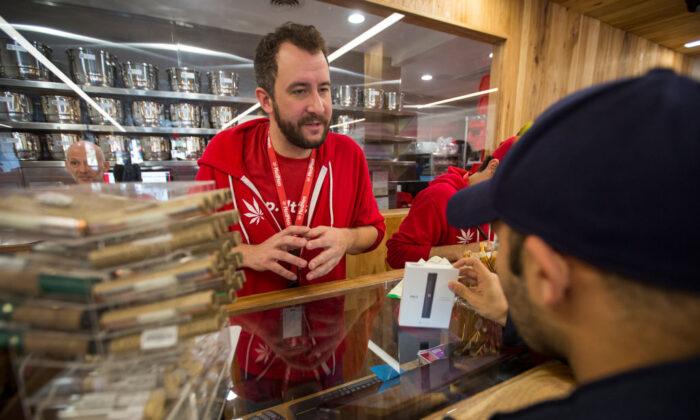State agricultural workers have been releasing sterile Mediterranean fruit flies in the Los Angeles basin via aircraft to combat one of the state’s latest fruit fly infestations.
The sterile flies are harmless to humans and pets and are the next step in helping agricultural officials eradicate Mediterranean (Medfly) fruit flies, according to the California Department of Food and Agriculture.
By releasing the sterile flies, the wild ones will find it difficult to breed and eventually die out.
While sterile Medflies have been released daily for the last 30 years to stave off infestations, when new flies are discovered—as was the case recently when three were identified in the Los Angeles area—the releases intensify. Such began in mid-October and will continue through February 2024, according to a spokesperson from the food and agriculture department.

Queensland Fruit Flies
State officials have also quarantined parts of Los Angeles and Ventura counties in Southern California after Queensland fruit flies, native to Australia, were found in Thousand Oaks, located in Ventura County about 60 miles northwest of Los Angeles.Residents in the quarantined region are asked to eat any fruit grown on their trees at home, and not take it outside of the area to share with friends and family.

Fruits and vegetables can be consumed or processed at the property where they were picked, the department of food and agriculture said in the release. If not eaten, residents are asked to dispose of the items by double-bagging them in plastic bags and placing them in the garbage bin for collection, not in the green waste bin.
The Queensland fruit fly is a serious pest to the state’s agriculture and natural resources, and can target over 175 different fruits, vegetables, and plants, the food and agriculture department said in its release.
Important California fruits at highest risk are grapes, strawberries, figs, citrus varieties, avocados, apricots, peaches, cherries, nectarines, plums, pears, and apples. Vegetables at risk are tomatoes and sweet peppers.
The female fruit fly causes damage by laying eggs inside the fruit or vegetables, which hatch into maggots and tunnel through the fruit, making it inedible.
The region usually detects two or three problematic fruit fly varieties each year, such as Mediterranean or Oriental fruit flies, according to Ken Pellman, spokesman for the Los Angeles County Agricultural Commissioner’s Office.
“There’s a bunch of different exotic fruit flies that don’t belong here,” Mr. Pellman told The Epoch Times.
Los Angeles County has traps placed mostly in residential locations to detect the pests that have likely hitchhiked on fruit brought in from out-of-state, arrived from friends and family from elsewhere, or via one of the area’s sea ports or airports.

Millions of Fruit Flies Dropped
A spokeswoman for the food and agriculture department told SFGATE, a San Francisco-based news outlet, that the department plans to drop 250,000 sterile male fruit flies per square mile from aircraft in a 9-square-mile region near the Medfly infestation site every week, and it could take six months or more to fully eradicate the current population.The aerial drops in the quarantine area don’t pose a risk to humans, pets, or any fruit in the area, according to Mr. Pellman.
“There’s absolutely no harm to humans in any of these releases, “ Mr. Pellman said. “That’s one of the great things about it.”
The food and agriculture department is working with the U.S. Department of Agriculture and agricultural commissioners in the affected counties to deploy several treatments besides the aerial drops to kill off the latest pests.
“The flights are to release sterile Medflies in the L.A. basin,” food and agriculture spokesman Jay Van Rein told the Epoch Times. “The treatments are exclusively done by hand ... and are only necessary on properties within 200 meters of the sites where the flies were found.”
Staff will cut fruit to inspect for fruit fly larvae on such properties, and if larvae are found, staff will remove fruits and vegetables by hand in the area, according to the food and agriculture department.
The properties within 200 meters will also be treated with natural, organic material to help remove any live adult fruit flies and reduce the population.
Traps will also be set to attract and eliminate the adult male fruit flies.







